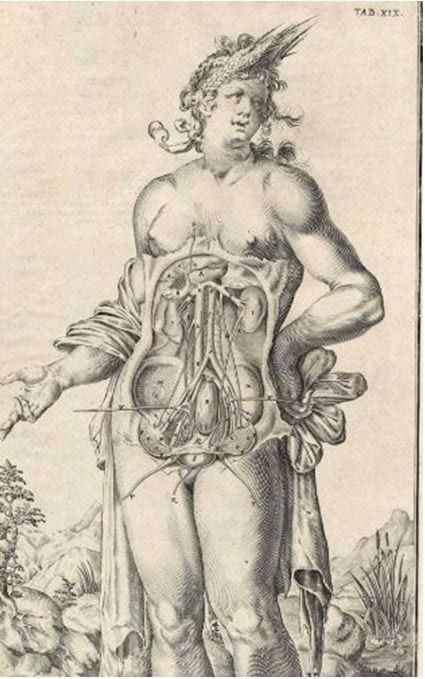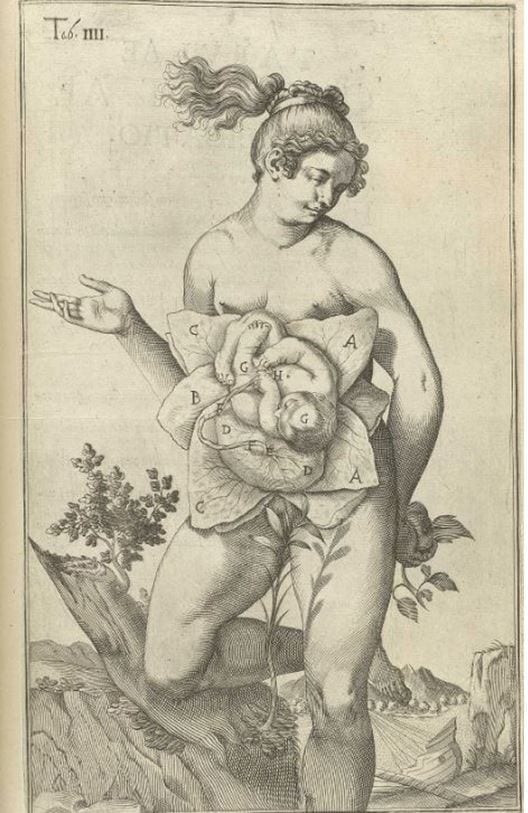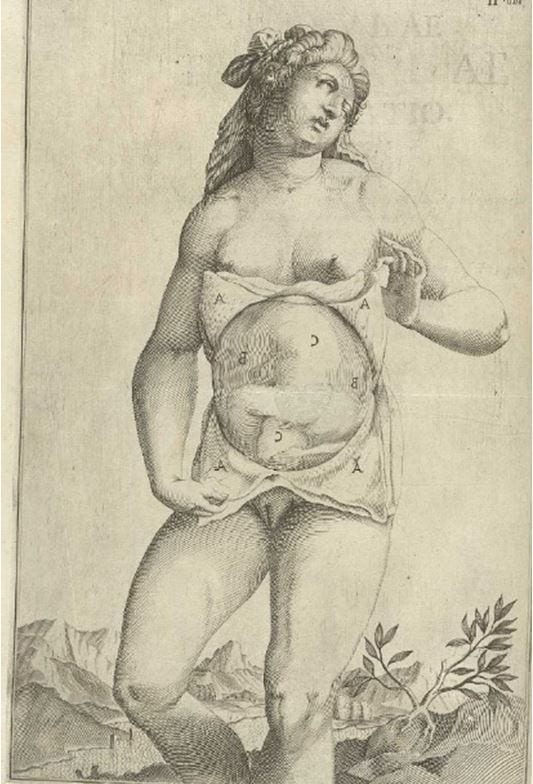In his time the Flemish physician Adrianne van den Spiegel (often referred to by the latinized name of Adrianus Spigelius) was the most renowned practicing clinician in the city of Padua. An accomplished anatomist, he was left with only meager eponymous pickings: the caudate (Spigelian) lobe of the liver and some more obscure structures around the abdominal muscles (the Spigelian aponeurosis, line, and hernia). For this posthumous deprivation he made up in life by having a successful medical practice and in botany by having a genus of plants (Spigelia) with six species named after him.
Like his compatriot Andreas Vesalius, Spigelius was born in Brussels (1578). He studied in Louvain and Leiden, then like Vesalius went to Italy. In Padua he studied under the illustrious anatomists Giulio Casserius and Fabricius of Aquapendente. Graduating about 1603, he seems to have assisted Fabricius in his private practice; competed unsuccessfully for the chair of practical medicine in Padua; and in 1612 returned briefly to Flanders. His next few years were spent practicing medicine in Germany and Hungary, then in Bohemia where he became “medicus primarius” or first physician. In 1616 the Venetian Senate appointed him to the chair of anatomy and surgery at Padua. There he lectured in the famous anatomical auditorium and attracted numerous foreign students.
Spigelius combined a successful clinical life with significant academic work. With Fabricius he treated one of the Medici princes in Florence, and also consulted in Venice. He published on botany as well as on medicine, notably including a book on fevers describing patients whom he had examined himself, palpating their abdomen to detect swellings, even conducting autopsies to confirm his diagnosis. He is credited to have worked on malaria, but, medical nosology being little advanced in his time, some of his patients appear to have variously suffered from typhoid, typhus, amebiasis, and various intraabdominal infections. His major works, on the morphology of the developing fetus (De formation foetu) and a major update on general anatomy (De humani corporis), were edited and published after his death by his son-in-law and illustrated by anatomical plates of his predecessor Casserius. Some of his artistically designed plates have been described as having “lovely ladies displaying their viscera with a coquettish grace . . . showing with pleasure their lacelike omenta and holding up their appendices epiploicae . . .” (BMJ 2:1422, Nov 13,1909)
In 1623 Spigelius was made a knight of the Venetian order of Saint Marco. He died two years later, remembered by posterity as the last great Paduan or Vesalian anatomist.



Further reading
- Gosh SK, Sharma S, Biswas S et al. Adriaan van den Spiegel (1578-1625: anatomist, physician, and botanist. Clin Anat. 2014; 27:952. 4.
- Jarcho S. A history of semitertian fever. Bull Hist Med Fall 1987; 61:411.

Leave a Reply